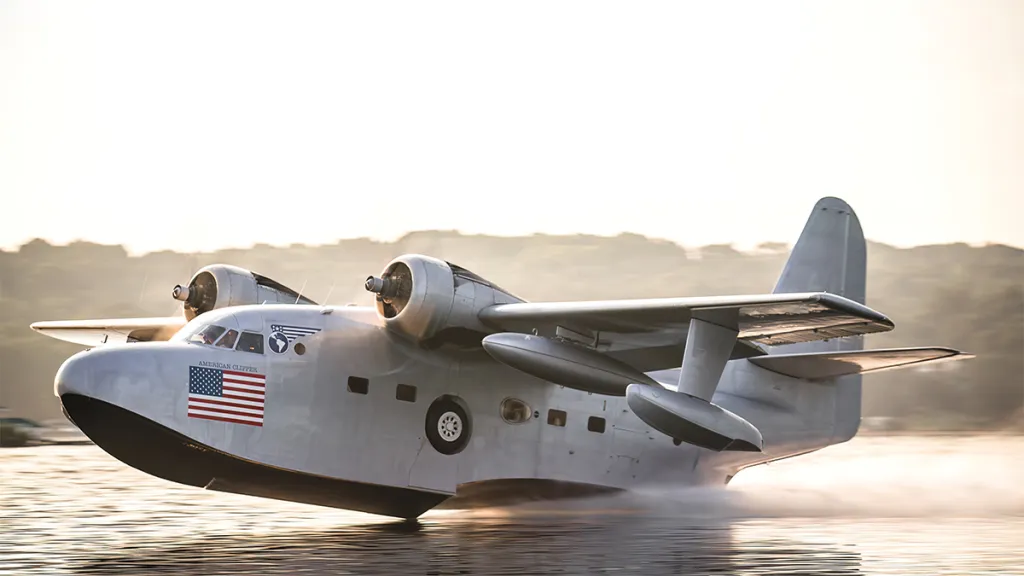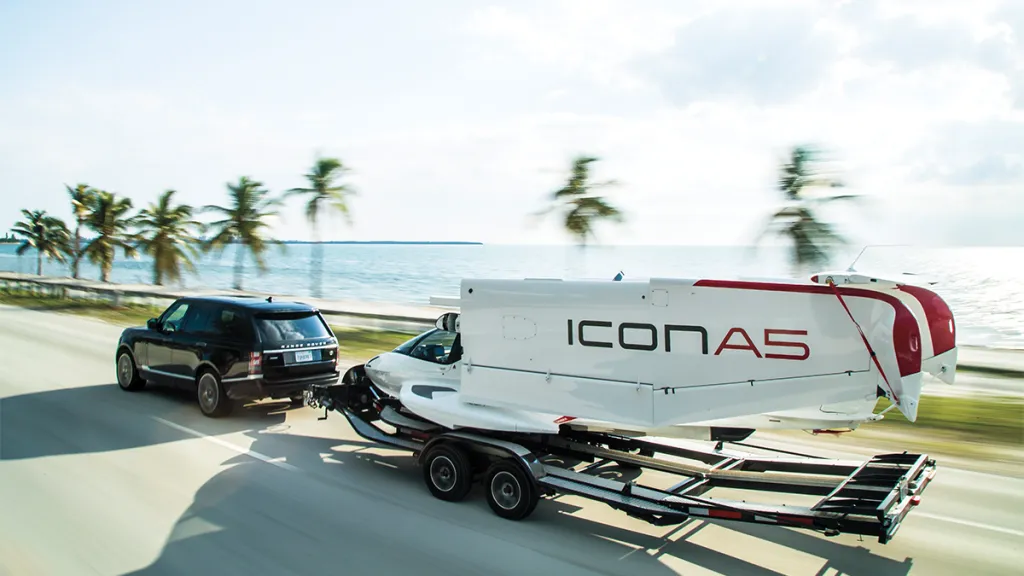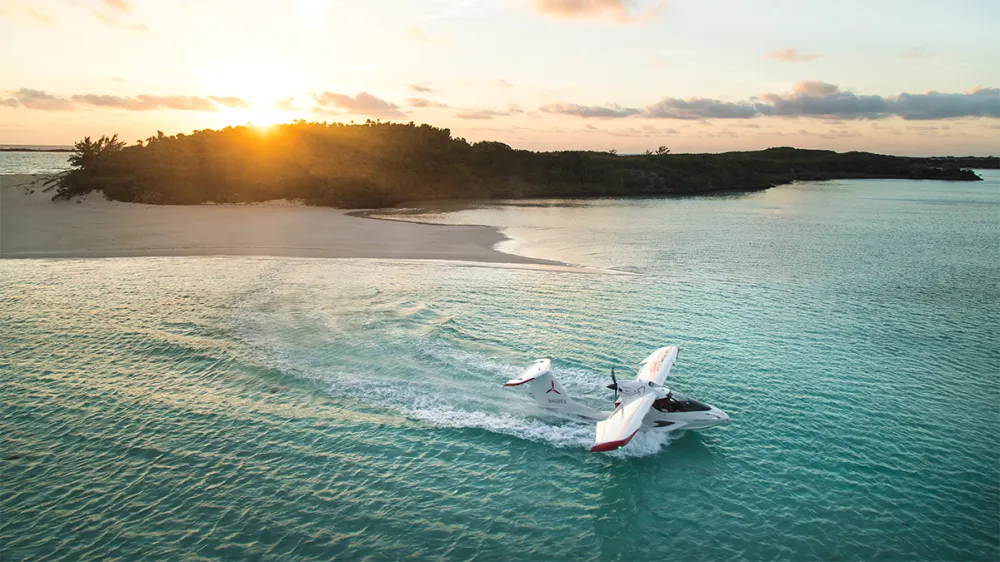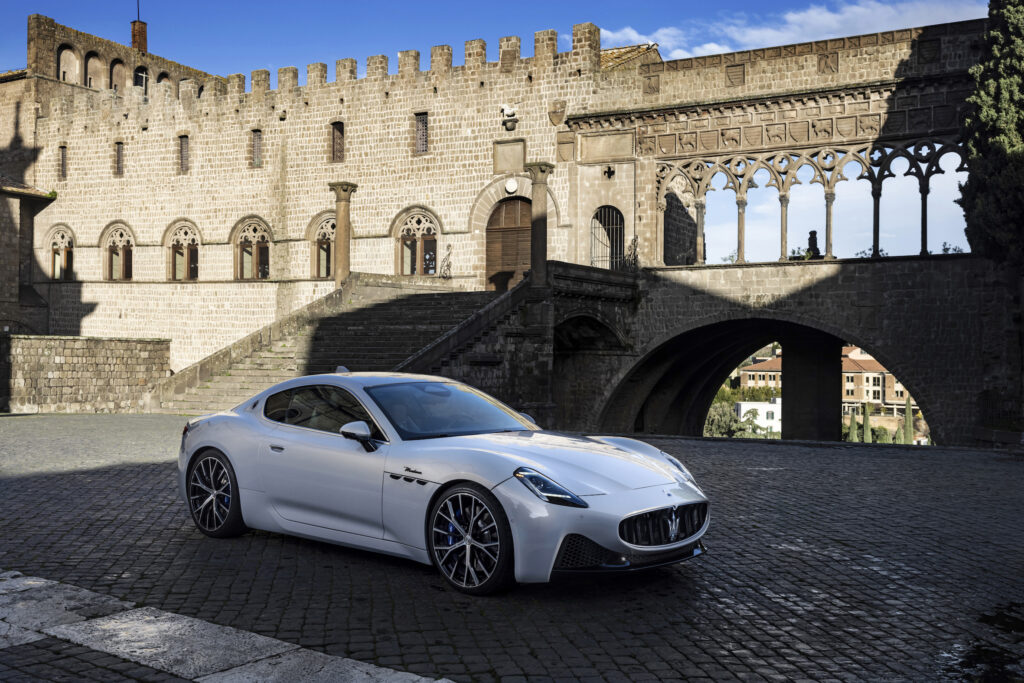After years of obsolescence, flying boats are remerging with electrical overhauls and more.
Decades before jetliners zigzagged across the planet at near supersonic speeds, a more genteel aircraft ruled the skies, designed to function in harmony with the 71 percent of the Earth that’s covered in water. Amphibious planes were among the first to bring a halo of panache to air travel, and not just thanks to their leisurely pace: Many models, among them the Martin M-130 “China Clipper” and the Sikorsky S-40 “Flying Forest,” remain paragons of aircraft design. It was only after World War II triggered a sprawl of airports that commercial aviation veered from harbors and waterways to more efficient point-to- point solutions, rendering seaplanes all but obsolete.
Yet like record players and film cameras, these retro machines are making a comeback, and it’s not hard to see why. Consider the once-ubiquitous Grumman Albatross, which counted as clientele everyone from Jimmy Buffett to the U.S. Air Force’s search and rescue services. In a world in which commercial air travel grew exponentially over 50 years ago, the very fact of its chunky, decidedly un-aerodynamic shape makes the Albatross seem saturated in the romance of a bygone era.

The 2023 documentary Flying Boat, by director Dirk Braun, celebrates the cult of the Albatross and the intrepid appeal of being able to take off and land essentially anywhere in the world. “The Albatross is particularly unique because it’s so diversely capable and has arguably been to more places on Earth than any aircraft,” Braun says.
Of the 466 examples of the Albatross built between 1947 and 1961, roughly a dozen remain operational, mostly in private hands. Braun’s fascination with the classic model led to his partnership in Amphibian Aerospace Industries, an Australian venture that purchased the blueprints to the original bird and plans to update the vintage airframes with modern avionics, as well as replace the radial engines with more efficient Pratt & Whitney PT6A turboprop units. The firm’s ownership of the Albatross’s G-111 FAA Type Certificate promises a straightforward transition to commercial sales—think island resorts, aid agencies, and private adventure seekers—at a starting cost that has yet to be determined. “With these upgrades and updates, it’s just going to be an unstoppable aircraft,” Braun claims, noting that he expects the Albatross 2.0 to roll off the production line in 2026.
Other start-ups are developing electric variations on the theme, including the ElFly Group’s 13-passenger Noemi. Founder and CEO Eric Lithun grew up watching flying boats deliver mail and daily newspapers in Norway—until they didn’t. “They stopped during my childhood because it was no longer cost-effective,” he says. Electrification and tourism could change that. Battery-powered twin-engine concepts such as the Noemi could use sea terminals for routes such as Miami to Key West, Cannes to Saint-Tropez, and Manhattan to the Hamptons. With current seaplane journeys averaging just over 50 miles, Lithun says the genre is ripe for an electric solution. His prototype is expected to take flight in 2026.

The outfit REGENT (Regional Electric Ground Effect Nautical Transport) takes a novel approach to the model with what CEO and cofounder Billy Thalheimer calls a seaglider configuration. It’s basically a wing-in-ground craft, meaning it’s able to maneuver thanks to the airflow interaction between the wing and the water. “We’re a purpose-built carbon-fiber boat that happens to fly, and we’re electric,” Thalheimer says. In the case of REGENT’s 14-occupant Viceroy, it’s being developed to skim above the surface on a cushion of air for up to 160 nautical miles—all using current battery technology and at a claimed cost of half the per-passenger expenditure of alternatives.
Interestingly, because of this ground effect, operators of such craft are classified as boat captains rather than pilots according to both the U.S. Coast Guard and the International Maritime Organization.
In the FAA’s Light-Sport Aircraft category, Icon’s A5—a two-seater with an automotive-inspired design— introduces high-end features such as folding wings, a carbon-fiber monocoque, and safety innovations that include a spin-resistant airframe and a built-in parachute. CEO Jerry Meyer says that Icon will soon expand the market for the nearly $400,000 A5 to Australia, Japan, and Canada. As for the prospect of increased competition in this suddenly crowded-again space, Meyer says, fittingly: “A rising tide lifts all boats.”








